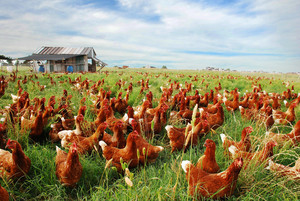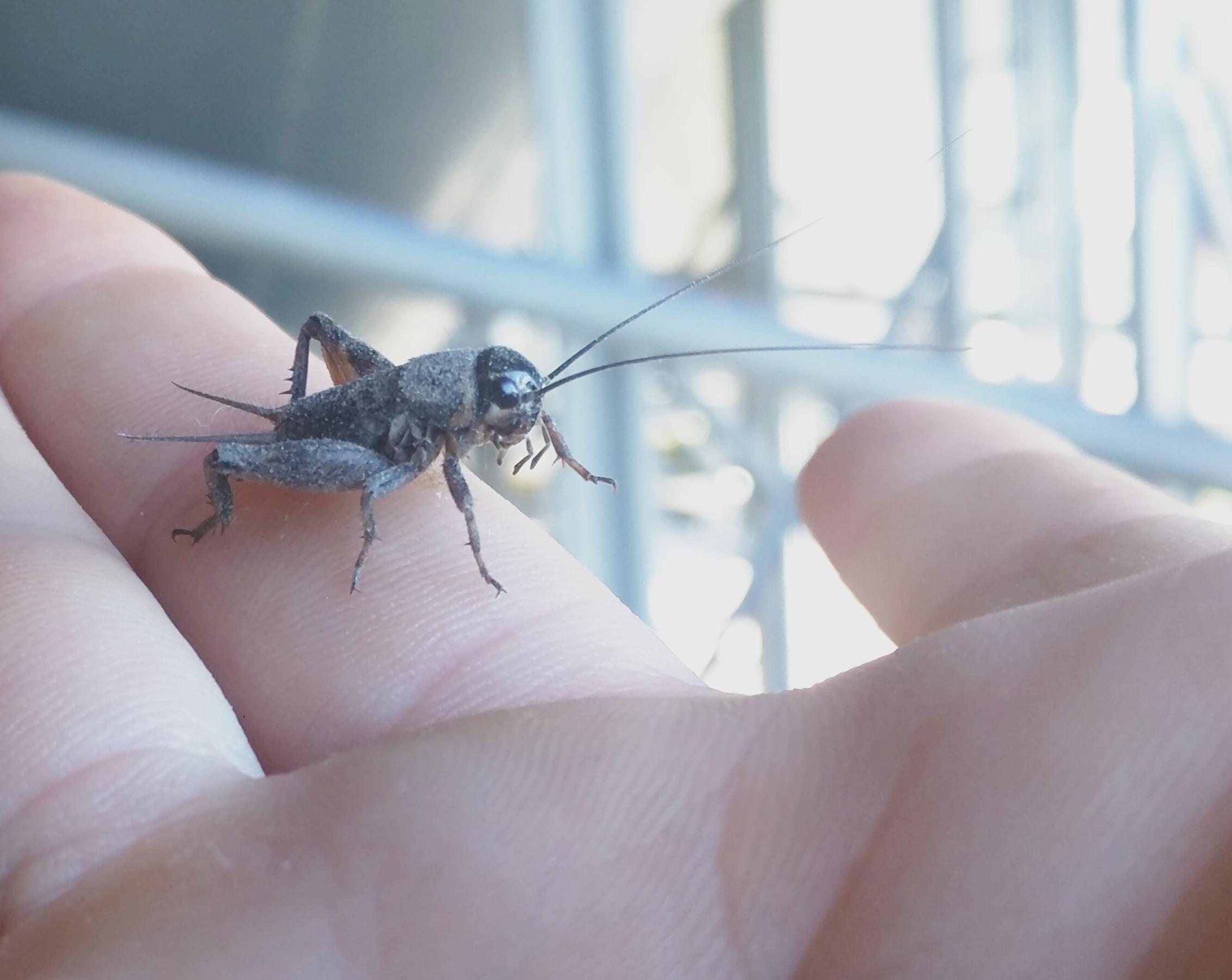09 Nov Mon 2015
Let us convince you to eat crickets… or at least feed them to your chickens!
Let us convince you to eat crickets… or at least feed them to your chickens!
Humans have eaten insects for thousands of years, and while they still remain a significant source of nutrition in Africa, Asia, and parts of South America, they’ve never really gotten the attention they’ve deserved in North America and European countries. As issues like sustainability, food security, and local food production gain traction, more and more people are visiting the idea of raising insects as a method of producing a low-cost, high-quality protein source which is also extremely low in fat and calories.
When you start investigating the realities of meat production, one of the first things you’ll learn about is feed conversion. Simply put, we grow animals to convert feed into meat for us to eat. The larger the animal, the slower it grows and therefore the amount of feed needed to grow it to maturity increases. It takes six pounds of feed to produce one pound of beef, that most American of meats (consumed at 70+ pounds per person, per year in the US). Smaller animals are better converters, with chickens coming in at around 3.5:1 and rabbits a little bit better at 3:1. Crickets come in at the top of the heap, with feed conversion ratios of around 2:1. What’s that all mean? Well, first of all, it means that pound for pound, you can generate more protein with less feed when raising crickets. Secondly, it means that the environmental impact of your cricket farm is dramatically lower than that of any other option. It can also be done indoors, and does not require conversion of land into farm production, a topic which is becoming more and more important as we seek to preserve our natural grasslands, forests, and desert landscapes.
With all that said, eating crickets is a healthy choice for your body as well as the planet. Ounce for ounce, crickets provide more than twice the protein of beef, and that protein contains all nine essential amino acids, to boot. Crickets are high in magnesium, an element which helps cut your risk of heart disease. Then there's iron: Crickets have more than three times as much of this muscle-aiding mineral as beef does.
Cricket Habitat
Ok, you’ve decided to take the plunge and raise yourself a batch of crickets. Good news: you don’t need to spend a lot of money to start your cricket farm. The basic setup is extremely simple: a 14-gallon Rubbermaid Roughneck Storage Totemakes a great container to hold your crickets. You’ll want two - one for the crickets to live in, and one for incubating and raising the baby crickets. Cut holes in the lid and cover them with metal (not plastic) window screen for ventilation. Cover the bottom of the container with 2” of play sand or cat litter, which you’ll want to change out every other grow cycle. For the “cricket condos,” we recommend a stack of egg case flatsor just corrugated cardboard. The idea is to create small vertical spaces for the crickets to hide in.
On top of your condos, place a small, flat dish of our certified organic cricket feed, as well as a dish with a large, clean kitchen sponge through which the crickets will drink.
Cricket Breeding
To ensure your crickets breed, keep your their habitat warm (80-90 degrees fahrenheit). As long as your crickets are warm, well-fed, and watered, they will breed prolifically. Place a tray of clean, moist topsoil in a shallow pan on top of your cricket condos. Within moments, your crickets will begin to explore it and lay eggs. After a day or two, remove the pan from the cricket habitat and put it into your second storage tote. Keep the soil moist by spraying it with a light mister. In two weeks or so, the eggs will begin to hatch. Collect these “pinheads” and put them into a smaller brooder container for 7-10 days. Make sure your pinheads are kept at 80-90 degrees and have access to clean food and water. You might consider getting some cricket water pillows which are safer for smaller crickets and easier to keep clean.
Food and Water are key
A source of fresh, clean water and high-quality feed will go a long way in ensuring the health of your crickets. Be sure to use sponges or the cricket water pillows as opposed to open dishes. Some folks use the small bell waterers found at feed stores for watering chickens. Those are OK, but make sure to fill the bottom with a sponge or some other absorbent material to prevent drownings. All feeders, waterers, and sponges should be cleaned and sterilized regularly to prevent disease.
Harvesting and Preparing your Crickets
Once your crickets are six to eight weeks old, they’re ready for harvesting. Remove the cricket condos from their habitat, taking care to gently tap it against the side of the tote to dislodge any crickets inside. Take a piece of corrugated cardboard and fashion a cone about 12-18” tall and place it in the center of your cricket habitat. Crickets love to climb and will quickly come over to investigate. Using the cone, transfer the crickets from your habitat into a freezer bag. Place your crickets in the freezer for about an hour. Depending on the temperature of your freezer, this may or may not fully euthanize them. Crickets (and many other insects) have a fascinating biological mechanism which allows them to cope with cold temperatures in a sort of hibernative state.
Once you’ve sufficiently chilled your crickets, boil a pot of water with a pinch of salt and boil the crickets for two minutes to sterilize them. Strain out the crickets and spread them over paper towels and allow them to dry. You can then store them in freezer bags for further use. At this point, many people often will roast the crickets and either keep them whole for use in recipes, or pulverize them to be used in flour, energy bars, or protein shakes. Roasting crickets is a straightforward process: simply preheat your oven for 200 degrees, arrange the crickets on a cookie sheet, season to taste, and cook for 60 minutes, or until fully dried. Once they’re cooled, you can roll them between your thumb and forefinger to remove the legs and antennae.
For more recipe ideas, take a look at the Insects Are Food website’s recipe section.
Have fun and enjoy your crickets! Let us know about your experiences by emailing us at mill@CoyoteCreekFarm.com or post on our Facebook page.
02 Nov Mon 2015
Organic Feeds Available on Amazon
Coyote Creek Organic Feeds on Amazon
Coyote Creek organic feeds are available for purchase on Amazon for delivery throughout the contiguous United States! Find everything you need to keep your backyard flock happy, healthy, and producing delicious, nutritious eggs. You can find our Rabbit Feed and Cricket Feed there too!
All of our feeds are USDA Certified Organic and Non-GMO Project Verified.
- Start on the right foot with our Chick Starter!
- Grow your pullets into strong healthy hens with our Pullet Developer!
- Maintain optimal health and consistent egg production with our Layer and Soy-Free Layer!
- Provide a great treat for your hens with our Scratch, while also encouraging scratching in the yard and exercise!
- We've got Rabbit Feed and Cricket Feed too!
We also offer several smaller supplemental goodies for your chickens and other animals including Calcium, Organic Cracked Corn, Organic North Atlantic Kelp, Wild Harvest Fishmeal, Trace Mineral Salt.
24 Oct Fri 2008
Customer & Vendor Appreciation Day
Open House
On Thursday, October 30th. between the hours of 11:00am and 2:00pm we are having an open house in appreciation of our customers and our vendors.
As the first commercial organic feed mill in the state of Texas we have experienced rapid growth in our milled feed and a massive expansion of our mill facilities.
We are pleased to contribute to the return of rural middle-class farm families who are now able to make small organic farms productive enough and profitable enough to sustain a family in a healthy lifestyle while contributing to a green food system in our region.
We are always open to new customers, and grain farmers who would like to sell us organic grain.
If you are in the area on October 30th you are cordially invited to drop by for some grass-fed beef and meet some really nice folks.
Jeremiah Cunningham - Owner/Manager
Susan Beckwith - Assistant General Manager


